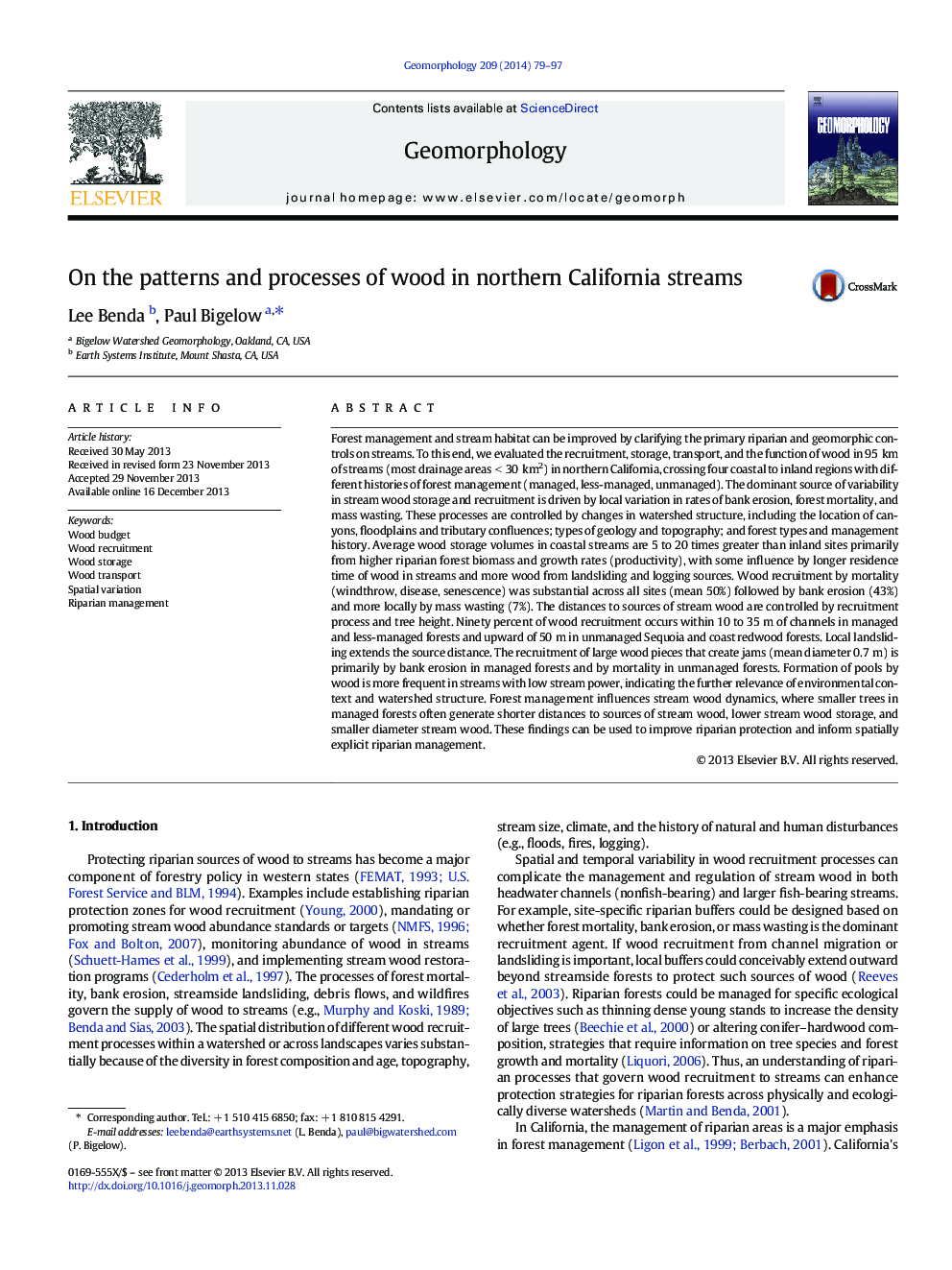| کد مقاله | کد نشریه | سال انتشار | مقاله انگلیسی | نسخه تمام متن |
|---|---|---|---|---|
| 6432609 | 1635440 | 2014 | 19 صفحه PDF | دانلود رایگان |
Forest management and stream habitat can be improved by clarifying the primary riparian and geomorphic controls on streams. To this end, we evaluated the recruitment, storage, transport, and the function of wood in 95 km of streams (most drainage areas < 30 km2) in northern California, crossing four coastal to inland regions with different histories of forest management (managed, less-managed, unmanaged). The dominant source of variability in stream wood storage and recruitment is driven by local variation in rates of bank erosion, forest mortality, and mass wasting. These processes are controlled by changes in watershed structure, including the location of canyons, floodplains and tributary confluences; types of geology and topography; and forest types and management history. Average wood storage volumes in coastal streams are 5 to 20 times greater than inland sites primarily from higher riparian forest biomass and growth rates (productivity), with some influence by longer residence time of wood in streams and more wood from landsliding and logging sources. Wood recruitment by mortality (windthrow, disease, senescence) was substantial across all sites (mean 50%) followed by bank erosion (43%) and more locally by mass wasting (7%). The distances to sources of stream wood are controlled by recruitment process and tree height. Ninety percent of wood recruitment occurs within 10 to 35 m of channels in managed and less-managed forests and upward of 50 m in unmanaged Sequoia and coast redwood forests. Local landsliding extends the source distance. The recruitment of large wood pieces that create jams (mean diameter 0.7 m) is primarily by bank erosion in managed forests and by mortality in unmanaged forests. Formation of pools by wood is more frequent in streams with low stream power, indicating the further relevance of environmental context and watershed structure. Forest management influences stream wood dynamics, where smaller trees in managed forests often generate shorter distances to sources of stream wood, lower stream wood storage, and smaller diameter stream wood. These findings can be used to improve riparian protection and inform spatially explicit riparian management.
Journal: Geomorphology - Volume 209, 15 March 2014, Pages 79-97
